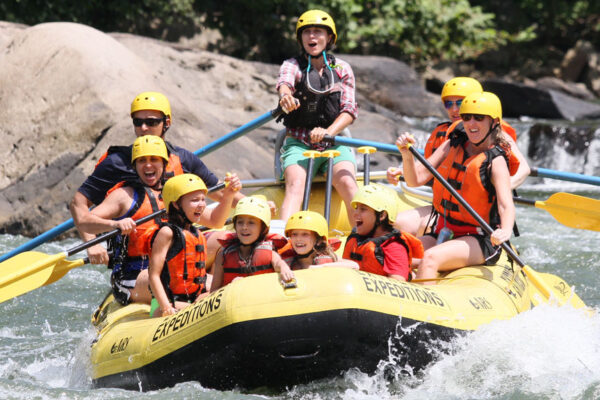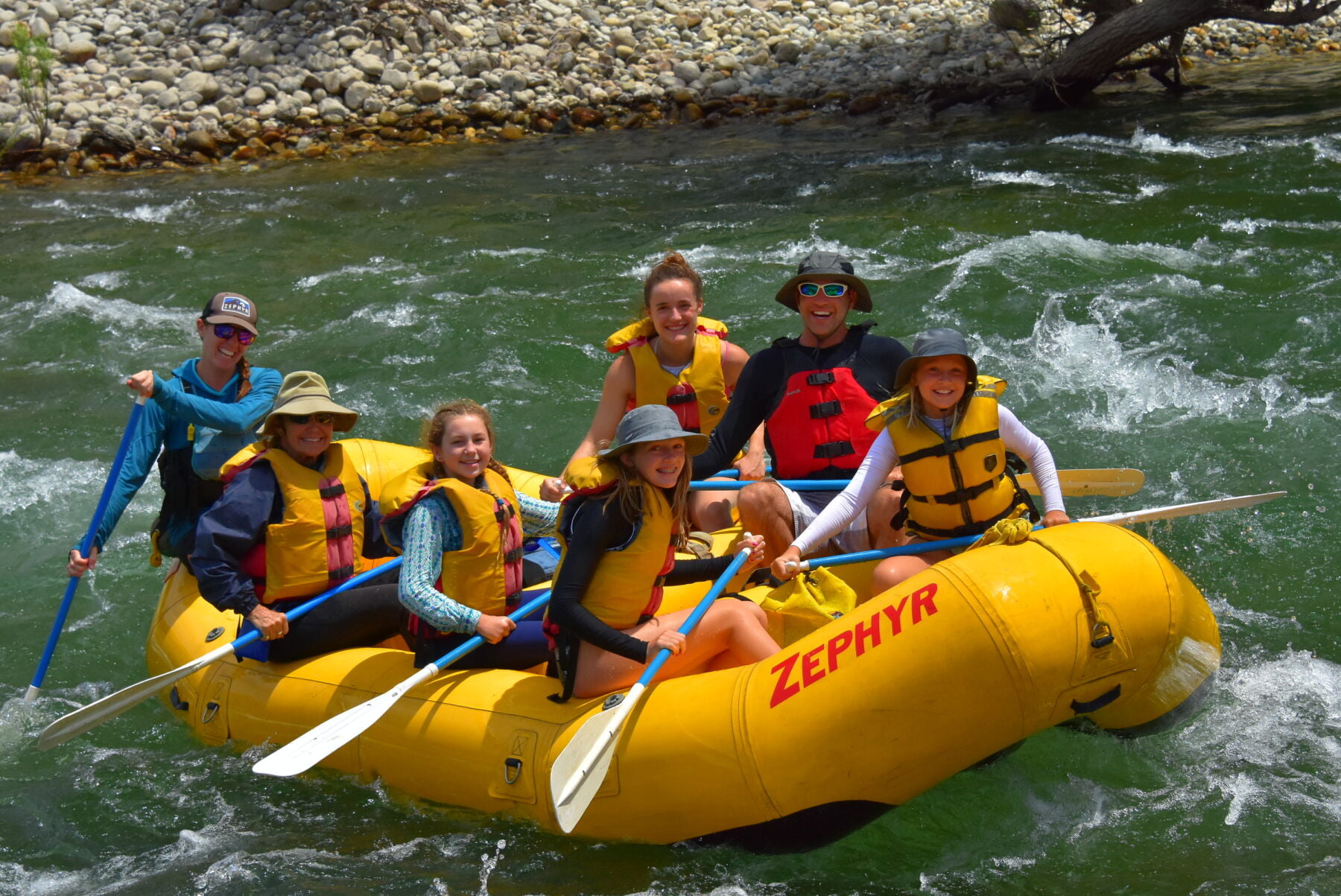Essential Abilities for Water Rafting
Grasping the art of water rafting calls for a combination of exact abilities and knowledge to navigate the unforeseeable currents of rivers, making it a thrilling yet possibly hazardous task. From comprehending the ins and outs of river characteristics to swiftwater rescue techniques and seamless team interaction, the journey down the river demands a mix of knowledge and flexibility. White Water Rafting Colorado.
Paddling Techniques
Grasping reliable paddling strategies is crucial for browsing water plethoras securely and successfully. One fundamental strategy is the forward stroke, where paddlers dip the blade totally right into the water and pull it back alongside the plethora to create propulsion.
Other than the forward stroke, the draw stroke is important for making quick changes or pulling the raft closer to an object. By positioning the paddle blade perpendicular to the water's surface and drawing the water in the direction of the boating, paddlers can efficiently change the vessel's instructions. Moreover, the backstroke serves as an important device for backing up or decreasing the raft when necessary.
River Reviewing
Effective paddling techniques, such as the forward stroke and attract stroke, play an important duty in navigating and interpreting river currents, an ability called river analysis. River reading includes the ability to analyze the speed, deepness, and direction of the water circulation to make enlightened decisions while browsing rapids. By comprehending how the water moves barriers and via various channels, rafters can choose the most effective route to safely go across the river.
One secret aspect of river reading is identifying different types of currents, consisting of waves, eddies, and hydraulics, and comprehending just how they can impact the boating. Eddies, for instance, are areas where the water streams in a circular movement, usually offering chances for remainder or critical maneuvers. Waves can show the presence of barriers or rocks, calling for quick adjustments in paddling method. Hydraulics, generally called "holes," are areas where water recirculates back upstream, presenting possible risks to boatings.
Grasping the skill of river reading is important for satisfying and secure rafting experiences, enabling paddlers to browse tough waters with self-confidence and accuracy.

Swiftwater Rescue
Recognizing swiftwater rescue techniques is vital for water rafting fanatics to respond successfully in emergency situation situations on fast-flowing rivers. Swiftwater rescue includes a collection of specialized abilities and expertise aimed at safely drawing out people from swift-moving water. One vital aspect of swiftwater rescue is recognizing the risks existing in fast-flowing rivers, such as strainers, undercut rocks, and strong currents, to prepare and carry out effective rescue procedures.
Proper equipment is necessary for swiftwater rescue, consisting of toss bags, rescue ropes, headgears, and personal flotation devices. Rafting enthusiasts must be proficient at utilizing this equipment in high-stress situations to guarantee the security of themselves and others. Furthermore, swiftwater rescue methods often include teamwork and coordination among rafters to execute complex rescue maneuvers effectively.
Training in swiftwater rescue is highly recommended for people involving in water rafting tasks, as it furnishes them with the needed abilities to manage emergencies swiftly and efficiently. White Water Rafting Colorado. By recognizing and exercising swiftwater rescue strategies, water rafting fanatics can improve their safety which of their fellow rafters on tough river explorations
Team Communication
Reliable team effort in water rafting relies greatly on smooth interaction among employee to guarantee coordinated and secure navigation through tough river conditions. Succinct and clear communication is essential for the success of any rafting exploration. Employee should have the ability to properly communicate essential details such as paddling commands, warning signals, and navigational guidelines.
In the commonly unforeseeable and busy atmosphere of river rafting, precise and timely communication can browse this site mean the distinction in between an effective run and a prospective calamity - White Water Rafting Colorado. Each group participant plays an essential function in the total communication procedure, whether it be paying attention attentively to the guide's guidelines, passing on details to other paddlers, or signaling for help when needed
Developing a typical language and communication system prior to hitting the water is crucial. This ensures that every person gets on the exact same page and comprehends just how to communicate properly during the rafting trip. By promoting a society of open communication and shared regard, rafting groups can enhance their performance and security on the river.

Safety Procedures
In the context of water rafting, the foundation of group interaction established during explorations is further enhanced with rigid adherence to safety and security protocols. Safety procedures are extremely important in guaranteeing the wellness of both rafters and guides during water rafting tours.
Another secret i thought about this security method is the thorough briefing provided by guides before starting a rafting journey. This rundown normally consists of details on paddling strategies, what to do in case of various emergencies, and signals used for communication throughout the trip. Moreover, it is important to have actually assigned security kayakers going along with the group to offer immediate help if needed. By purely adhering to these safety protocols, water rafting trips can be both thrilling and secure for all participants involved.
Conclusion
In verdict, mastering vital skills for water rafting is critical for a delightful and risk-free experience on the river. Paddling methods, river reading, swiftwater rescue, group communication, and safety and security procedures are all essential elements that contribute to an effective rafting trip. By sharpening these skills, rafters internet can browse challenging waters with self-confidence and ensure the safety and security of themselves and their staff member.
Mastering the art of water rafting needs a mix of accurate abilities and understanding to browse the unpredictable currents of rivers, making it a thrilling yet possibly unsafe activity. By putting the paddle blade perpendicular to the water's surface and drawing the water towards the boating, paddlers can properly change the vessel's direction.Comprehending swiftwater rescue techniques is vital for water rafting fanatics to respond efficiently in emergency situation scenarios on fast-flowing rivers.Effective team effort in water rafting counts greatly on seamless communication among group participants to guarantee collaborated and safe navigation through difficult river problems.In verdict, understanding necessary abilities for water rafting is essential for a risk-free and delightful experience on the river.